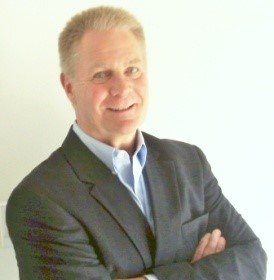Then, there’s the actual task of doing the drills to help improve our perception. Once we understand how we should move, feeling it is the next step. It’s hard. It’s hard to change a bad habit. I think we all know that and experience that in different aspects of our life; but especially trying to change a movement pattern is real, hard. It’s drills and exercises to help us be stronger and practice retraining that neurological system to understand how to create a new pattern of movement.
Phil Faris: When you do video analysis, it sounds like you’re sharing it with your patients and getting them to look at it like you do. Why is that important?
Denise: I think that when somebody analyzes what you’re doing, it’s always very humbling.
It’s easy to blow something off, say, “Well, you know, you just filmed me for two seconds. I don’t always move like that.” Well no, you’re right. Maybe you don’t, but it’s just a snippet, and you must start somewhere. When you have someone start to break down those types of things with you like this is just a starting point. I can email videos to them, and they can refer to them. They can learn how to film themselves. That’s the whole point. I want to empower people to learn how to film themselves, so they don’t always need me. That’s why we call it an ‘academy’ here, is that I want to teach people how to move better.
When you learn what you’re looking for, you can film yourself from there on out and say, “Oh, I was slipping back into that old habit.” “I do need to go back to some of those drills because I was going back to my old pattern.” Being able to recognize that is key to that.
Phil Faris: You give patients the ability to recognize in themselves and probably in others, movement patterns so that they can understand the cause and effect between movement and injury. Earlier, you mentioned over-striding. What are some of the implications if someone’s over-striding?
Denise: They’ll start getting things like IT band pain or knee pain, or plantar fasciitis, or Achilles tendonitis, or shin splits. Over-striding is this awful thing that for some reason when we see it in magazines, people think that’s normal but that’s the worst thing people can do in their running is over-striding. I think once you know that it is bad, you’re going to start seeing runners do it. Again, that perception of being able to recognize movement patterns, you’ll slowly start watching people as they run by you. Like, ‘Oh, that guy totally is over-striding,’ or whatever you’re starting to notice because you’ve seen it and now you can recognize it.
Phil Faris: Are there other common movement patterns that you see frequently that would apply to a Baby Boomer?
Denise: I see a lot of golfers with a lack of hip mobility. My husband is an avid golfer, and I’m just learning how to play but I can recognize when the body doesn’t move correctly. When I watch some of these people golf, and it is mostly Baby Boomers, they lack hip mobility. Your hips are your powerhouse, and so a lot of people try to over-swing because they’re trying to power through just using their upper body. This can be applied to any sport that involves a racket or a golf club, or something where you’re swinging or hitting. The more momentum that you get through your hips, the more that power is going to translate through your extremities. Getting that power behind your hips, and getting your hips to move the right way, getting the joints to move, and getting the muscles to get the power behind them just helps set you up for success.
Phil Faris: You mentioned a lot of skills and drills to improve a movement pattern to get people’s bodies to reprogram themselves. Can you give us some examples of the more common drills that people do and how it helps them to get better?
Denise: We talked about runners. A lot of that is just working on landing underneath your hips. We use simple things like jump-roping or skipping, or running backward. Because then you’re focusing on just landing and what it feels like to have that reduced impact through all your joints. If we’re going to talk about a sport like tennis or basketball, or golf, it’s retraining the hips and shoulders to help, instead of hindering you. A lot of times, we lock out our shoulders, especially with runners, too. We tend to lock our upper body out. You need to have your shoulders help you get the rest of your body moving. They act as like puppet strings. If I can get my shoulders to move, everything will go along with it, versus locking that down.
We do a lot of throwing a ball, but not being able to bend your elbows or throw with your wrists when you’re doing this drill. People should try to learn how to toss a ball only by pushing up through their shoulders; which is awkward to do the first time you do it, but you have an eight-pound medicine ball in your hand, and you must learn to shove that ball up into space only using your shoulders. Or, if you’re doing a little curb hop, where you’re hopping up and down on a two-inch curb. Not swinging your arms, necessarily, to get your body up, but learning how just to use your shoulders to shrug up and pull your body weight up. Using the big joints and the big muscles we must help us, versus always relying on these swinging motions to get the power.

